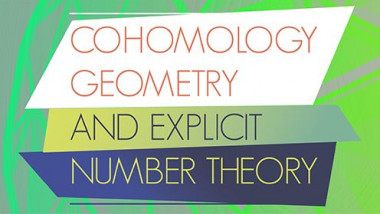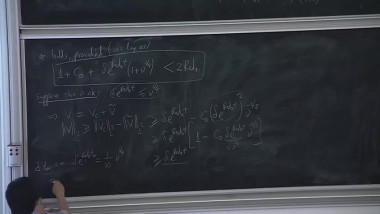Introduction to singular perturbations and boundary layers (2/4)
Appears in collection : Introduction to singular perturbations and boundary layers
Boundary layers are a general phenomenon that appears in a partial differential equation with a small parameter and for which the boundary conditions cannot be satisfied when the parameter is zero. We speak about singular perturbations when the small parameter affects the highest order derivatives in the PDE. The solution with non-zero parameter will tend in a certain sense towards that with zero parameter in the interior with a brutal transition layer in order to adhere to the boundary conditions in the vicinity of the boundary. The most common example of boundary layers appears in fluid mechanics, where the parameter is the viscosity in the Navier-Stokes equations, and the equations with zero parameter are the Euler equations. There are examples in many other areas: plasma physics, population dynamics, acoustics, electromagnetism... In this course, we will focus mainly on the singular perturbation problems that result from fictitious domain methods with penalization. These methods are frequently employed to treat boundary conditions in numerical simulations of fluid dynamics. The general idea consists in immersing the original domain into a geometrically bigger but simpler domain called a fictitious domain. This method imposes the original boundary conditions by introducing a forcing term in the complementary domain, which results in a singularly perturbed problem with potential boundary layers. This mini-course is intended as a brief and somewhat personal introduction to singular perturbations and boundary layers, with an emphasis on their important role in fictitious domain penalization methods. The purpose is to introduce the audience to the necessary tools and techniques related to boundary layers and singular perturbation problems, and to demonstrate how these tools can be applied to the modeling of boundary conditions through penalization methods. We begin by discussing the main concepts related to singular perturbations and boundary layers, including their definition, the thickness of the boundary layers, the correctors and different examples: reaction-diffusion and advection-diffusion equations. Then, we focus on the study of fictitious domain methods with penalization using the boundary layer approach to establish the convergence of the penalization method, first for Dirichlet boundary conditions and then for Neumann or Robin boundary conditions. Finally, we highlight some of the ongoing research in the field.
















